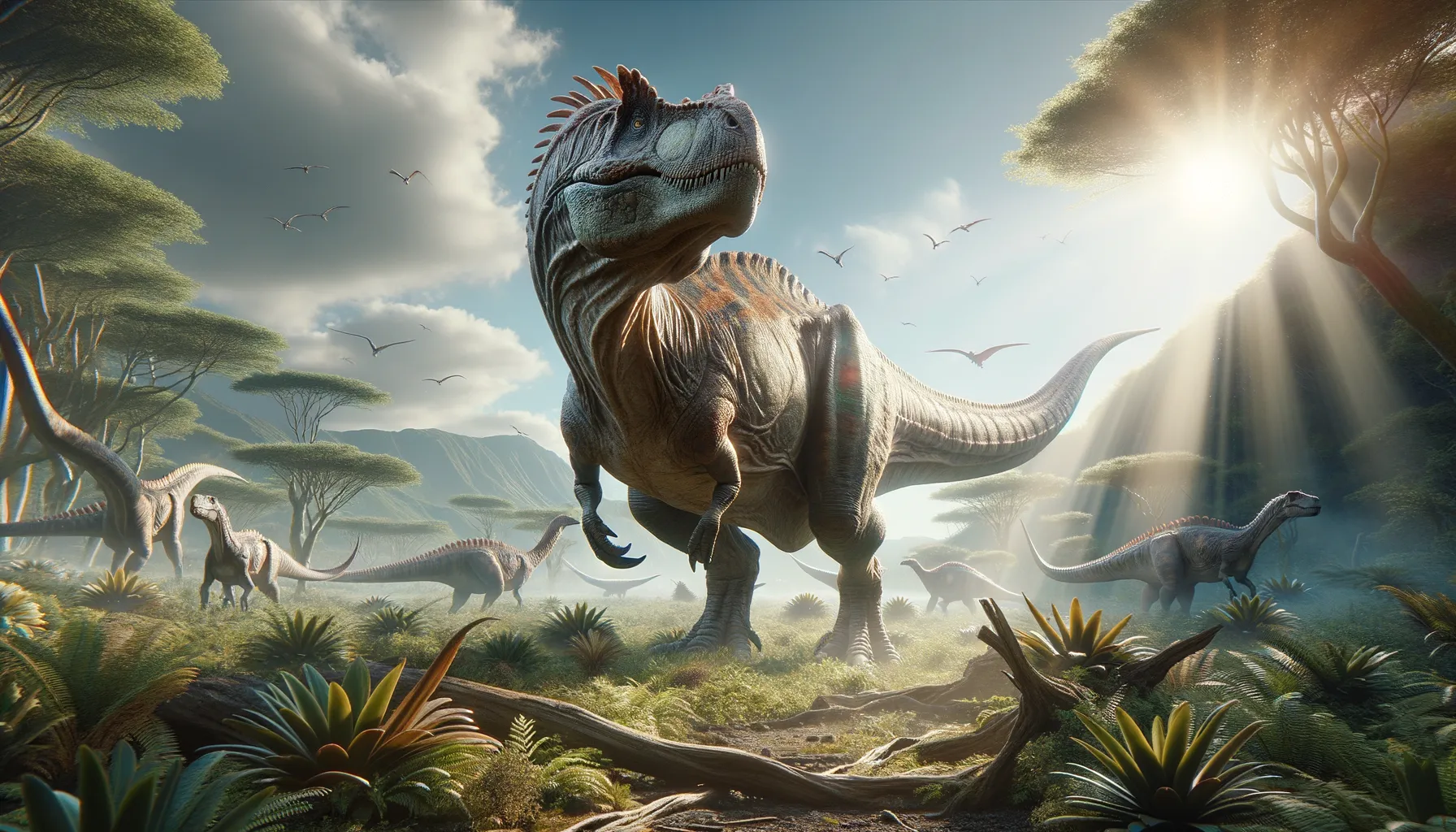
Dinosaurus
Triassic giant ruling the ancient lands
Period
Triassic
Length
Typically measured around 8 meters long.
Height
Reached heights of approximately 3 meters.
Weight
Weighed around 800 kilograms.
Dinosaurus was a formidable presence during the Triassic period. With its impressive size and a robust build, it was a remarkable creature among dinosaurs. This dinosaur has fascinated scientists due to its unique features and adaptations, contributing significantly to our understanding of prehistoric life and the evolutionary pathways that followed. Studies of Dinosaurus continue to provide insight into the complex web of veracity and relationships within its ancient ecosystem.
Diet
Dinosaurus primarily fed on smaller plant-eating dinosaurs and large insects of its time. Its carnivorous diet included opportunistic eating habits, taking advantage of available prey in its territory.
Hunting
Dinosaurus employed stealth and speed to catch its prey, often relying on ambush tactics. Solitary hunters, they adapted their strategies to smaller or unsuspecting prey to maximize success.
Environmental challenges
Dinosaurus faced environmental challenges such as changing climates and competition for food resources. The dry and fluctuating climate of the Triassic required adaptations in hunting and dietary habits. Additionally, they had to deal with potential threats from other larger predators and environmental disasters, such as volcanic eruptions or floods.
Speed
Known to be moderately fast for its size.
Lifespan
Estimated to live for around 20 to 30 years.
First discovery
First fossil found in the late 19th century.
Fun Facts
- Dinosaurus is not the scientific name of a real dinosaur; it's a generic term sometimes used in pop culture.
- The name 'Dinosaurus' translates to 'terrible lizard', which mirrors the Greek roots of the word 'dinosaur'.
- Dinosaurus might be used as a stand-in name for any type of dinosaur before a proper identification.
- Some toys and children's books label their dinosaur figures as 'Dinosaurus' just for simplicity.
- In fiction, 'Dinosaurus' might appear as a dinosaur character's name, symbolizing something big and ancient.
- The mythical creature Dinosaurus often captures children's imaginations due to its undefined and mysterious identity.
Growth and Development
Dinosaurus hatchlings were relatively independent soon after birth, needing to grow quickly to avoid predation. They likely had a rapid growth phase in their juvenile years to reach a stable size, which offered some protection against other predators. As they matured, experienced Dinosaurus could effectively navigate their environments, improving their survival rates.
Habitat
Dinosaurus lived in varied environments, from dense forests to open plains. These habitats provided ample opportunities for hunting and foraging for food. Water sources such as rivers and lakes were also essential for Dinosaurus, ensuring hydration and access to prey.
Interaction with other species
Dinosaurus had competitive interactions with other carnivorous species, often fighting for territorial dominance. Despite its competitive nature, it evolved coexisting strategies to share territory with some herbivorous dinosaurs. Interactions in social contexts were limited but crucial for genetic diversity through seasonal migrations for breeding.
Natural lifespan
Dinosaurus naturally lived for approximately 25 years under optimal conditions.
Reproduction
Dinosaurus likely laid eggs in nests constructed in secure environments to protect them from predators. Courtship displays were probable, with mates selected for strength and fertility indicators. Nesting sites were chosen with care, often near water sources for abundant food access.
Social behaviour
Dinosaurus was primarily solitary, interacting with others mainly during mating seasons. Occasional groupings could occur but were typically temporary, focused on strategic hunting or defense. Territorial behavior was common, with established dominance hierarchies in overlapping habitats.
Fossil locations
Fossils of Dinosaurus have been predominantly found in regions of Western Europe and North America. Many specimens came to light through quarrying activities, revealing well-preserved skeletons. These locations provided rich insight into the environmental conditions and biodiversity during the Triassic period.
